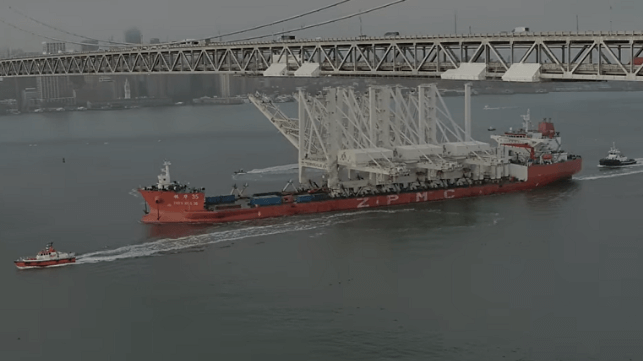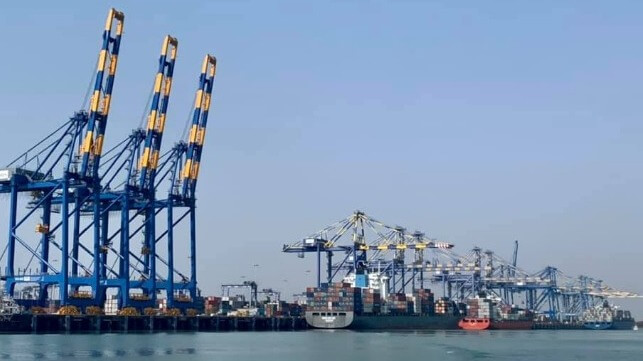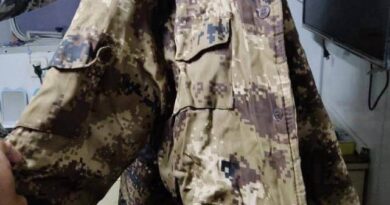Big Or Small, Boats Are Indispensable To The
For the U.S. Navy, boats perform missions from mundane maintenance chores such as hull scraping and cleaning overboard discharges to clandestine special forces insertion and extraction. Some boats are about as basic as you can imagine, and some are equipped with sophisticated combat systems and weapons.
Big or small, they all perform indispensable tasks for the Navy, Marine Corps and Coast Guard.
Boats that are carried on and launched from ships are referred to as “shipboard boats,” to distinguish them from boats based at installations ashore. They serve various purposes, including search and rescue, personnel transport, and providing a platform for special operations.
Yes, the Navy is embracing the employment of small unmanned systems for a variety of purposes. Some unmanned vehicles will perform jobs that must now be done with crewed boats, but in limited roles The employment of boats and small craft continue to be a large and vital part of the Navy’s overall inventory for the present and into the future.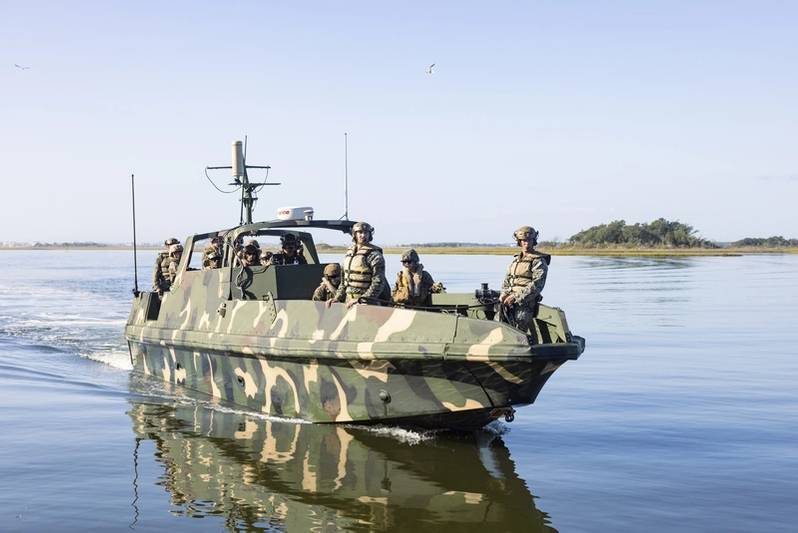 U.S. Marines with Combat Logistics Battalion 8, Combat Logistics Regiment 2, 2nd Marine Logistics Group, transport simulated casualties in a Riverine Assault Support System during Bold Quest, on Camp Lejeune, North Carolina, Oct. 31, 2024.
U.S. Marines with Combat Logistics Battalion 8, Combat Logistics Regiment 2, 2nd Marine Logistics Group, transport simulated casualties in a Riverine Assault Support System during Bold Quest, on Camp Lejeune, North Carolina, Oct. 31, 2024.
U.S. Marine Corps photo by Sgt. Mary Torres
The All-Purpose RHIB
The most common type of shipboard boat in modern navies is the Rigid Hull Inflatable Boat (RHIB). They have replaced many older types of boats used by the Navy, such as motor whale boats and replacing ships boats, such as the motor whaleboat once found on just about every ship, RHIBs have been much easier to launch, operate, recover, store and maintain. They come in a wide range of sizes, speed, range and durability. General, they’re fast, maneuverable and can carry people and equipment.
Boats are often used to assist with mooring to a buoy, conducting painting or maintenance near the waterline, and transporting crewmembers or parts to and from the beach or other ships nearby. RHIBs are often launched during main overboard situations or conducting search and rescue (SAR) operations. Surface combatants frequently transport boarding parties to investigate suspicious vessel during “Visit, Board, Search and Seizure” (VBSS) missions. Following the Iraq and Afghanistan Wars, RHIBS were used to protect the oil platforms off of Iraq by delivering VBSS teams to tanks before they took on oil and to move personnel and security details between the ships and platforms. These boats usually operated in pairs, and carried armed personnel.
In the past, commanding officers would have their own “captain’s gig,” and flag officers would have a 40-foot “admiral’s barge.” Today, most ships have a standard 7-meter RHIB. Larger ships might have several. Many units embark ships with their own 11-meter RHIBs. Amphibious ships embark landing craft that can also be used for a variety of purposes.
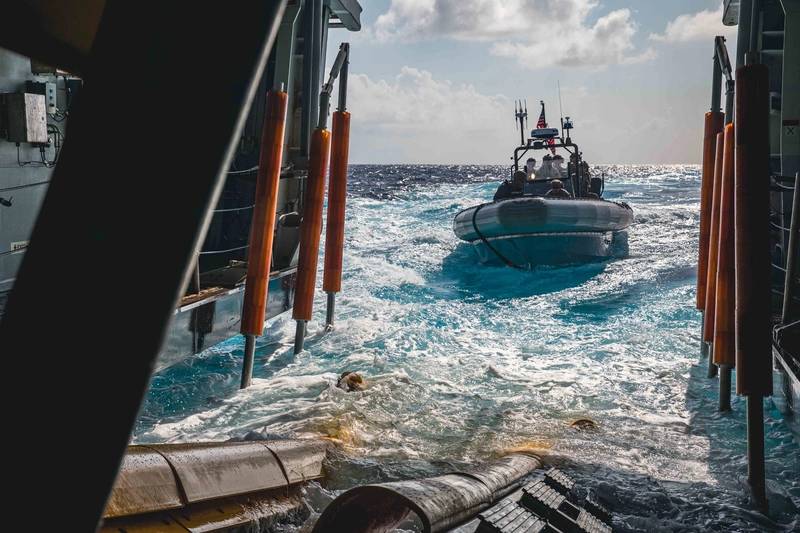 Coast Guardsmen, assigned to the “Los Ochos Locos” of Law Enforcement Detachment (LEDET) 408 and Sailors assigned to the Freedom-variant littoral combat ship USS Billings (LCS 15), recover the rigid-hull inflatable boat (RHIB).
Coast Guardsmen, assigned to the “Los Ochos Locos” of Law Enforcement Detachment (LEDET) 408 and Sailors assigned to the Freedom-variant littoral combat ship USS Billings (LCS 15), recover the rigid-hull inflatable boat (RHIB).
U.S. Navy photo by Mass Communication Specialist 3rd Class Aaron Lau
To manage the security perimeters that the Navy has placed arounds its ships, docks and infrastructure, the service found a small logger boat, known as the “Boomin’ Beaver,” built by Chuck’s Boat and Drive Company of Longview, Wash., which are being used to open and close port security barriers for its bases. It’s just 19 feet long with a 10 foot-beam, with a 260 HP Cummins diesel and a ZF transmission.
Work boats are used for ship’s husbandry tasks such as hull cleaning or painting, as well as deploying oil spill booms. Dive boats have room and deck space to conduct dive operations and support salvage, ship husbandry or other assignments. Torpedo retrievers can remain at sea for several days to support underwater weapons training or testing by recovering torpedoes, bringing them on board, and returning to them to shore to be prepared for reuse.
Surface combatants generally have boats that can be used in the “Visit, Board, Search and Seizure” (VBSS) mission, role conducted by specially trained and certified crews. The teams (which are usually armed) must be able to come alongside a vessel to be boarded and inspected (and are not always compliant), and get the team on and off safely.
RHIBs can be transported by trailer, in aircraft, and carried in boat davits or in stern notches for rapid launching and safer recovery.
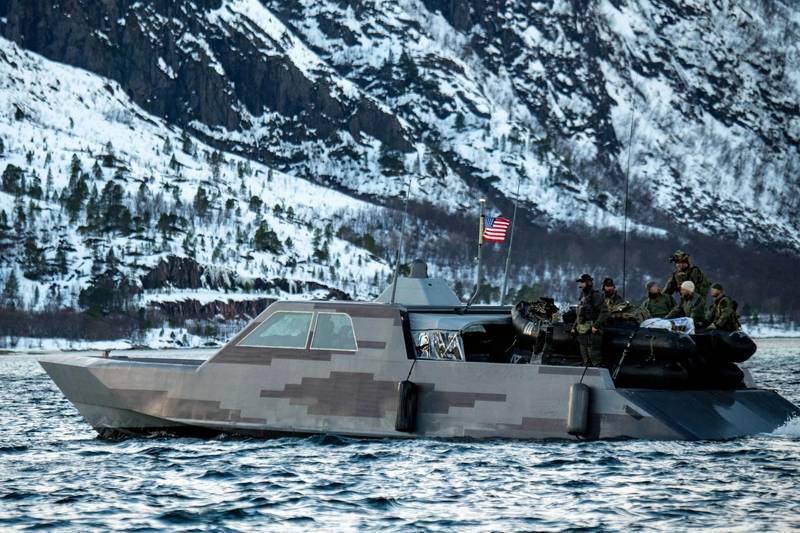 East Coast-based U.S. Naval Special Warfare Operators (SEALs) and Special Warfare Combatant-Craft Crewmen (SWCC) conduct maritime training aboard a Combat Craft Medium with Norwegian Naval Special Operations Commandos as part of Nordic Response 24. The CCM can be custom-equipped with a variety of weapons and systems, to include drones and loitering munitions. They can carry a team of 19 SEALS up to 600 miles at 40 knots. The boats first came into service in 2015, and are now being upgraded.
East Coast-based U.S. Naval Special Warfare Operators (SEALs) and Special Warfare Combatant-Craft Crewmen (SWCC) conduct maritime training aboard a Combat Craft Medium with Norwegian Naval Special Operations Commandos as part of Nordic Response 24. The CCM can be custom-equipped with a variety of weapons and systems, to include drones and loitering munitions. They can carry a team of 19 SEALS up to 600 miles at 40 knots. The boats first came into service in 2015, and are now being upgraded.
U.S. Navy photo by Mass Communication Specialist 1st Class Bill CarlisleHit the beach
Amphibious operations call for various types of landing craft. Naval Sea Systems Command PMS 317 is the program office responsible for the Landing Craft Utility (LCU); Landing Ship Medium (LSM); Landing Craft Air Cushion Extended Service Life Extension Program (LCAC E-SLEP), and Ship-to-Shore Connector (SSC). They connect the sea-base afloat with the operating area ashore, and thus must be specially designed to offload on the beach.
Landing craft connect the seabase afloat with the operating area ashore, and thus must be specially designed to offload on the beach.
The Landing Craft Mechanized (LCM) and Landing Craft Utility (LCU) area useful vessel used for amphibious lift to the beach, and many other tasks. According to the Navy’s Fact File, “Mechanized and utility landing craft are rugged, steel displacement vessels used by amphibious forces to transport equipment and troops from ship to the shore, along the shore, and from shore back to the amphibious warships. Landing craft are also used to support civilian humanitarian/maritime operations.” They’ve been around for years. The Navy is upgrading some of the existing LCU 1610-class boats, and is procuring the new LCU 1700. The new model doesn’t look much different than the old, because it has to fit into the same well decks and carry the same vehicles and equipment. But the systems are newer. The Navy took the LCU 1700 work from Swiftships of Morgan City, La. That work is now being done by Austal USA of Mobile, Ala.
The Navy is has put some of its Landing Craft Air Cushions (LCACs) through an Extended Service Life Extension Program. The service is now procuring the new version of LCAC, called the Ship to Shore Connector, or SSC, which the Navy calls the “evolutionary replacement” of the LCAC. Textron Systems of Slidell, La., is the SSC prime contractor.
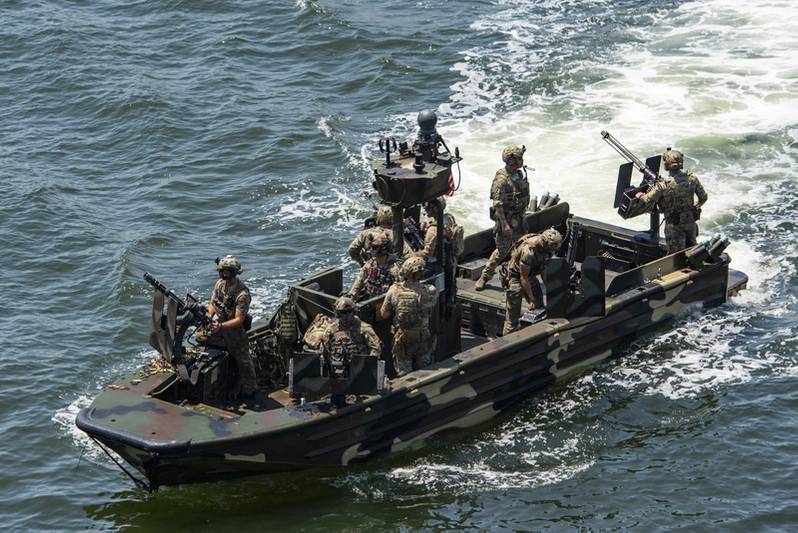 U.S. Navy Special Warfare Combat Crewman from Special Boat Team 22 showcase the firepower capabilities of the Special Operations Craft – Riverine.
U.S. Navy Special Warfare Combat Crewman from Special Boat Team 22 showcase the firepower capabilities of the Special Operations Craft – Riverine.
US Navy Photo
Special Ops
Other boats specialized for expeditionary operations are employed by special operations units, riverine forces and Marines.
Special Operations forces employ a variety of boats, including the 41-foot Combat Assault Craft; 61-foot Combat Craft Medium, capable of 52 knots; and the 33-foot Special Operations Craft Riverine.
The Navy had big plans for the Mark VI patrol boat, which was to be the replacement for the Riverine Command Boat (based on the Swedish CB 90) for patrolling littoral waters. It was small enough to be carried aboard a Navy amphibious ship, but at 85 feet, was large enough to have better range and systems than the RCB, which was used for coastal and riverine missions. But the much-touted MK VI, found to be costly to operate and maintain. The Navy is, instead, procuring a new 40-foot patrol boat (40PB), suited for port security and inshore patrol missions.
Many boats are offered for foreign military sales. For example, Mark VI patrol boats are being available to Ukraine.
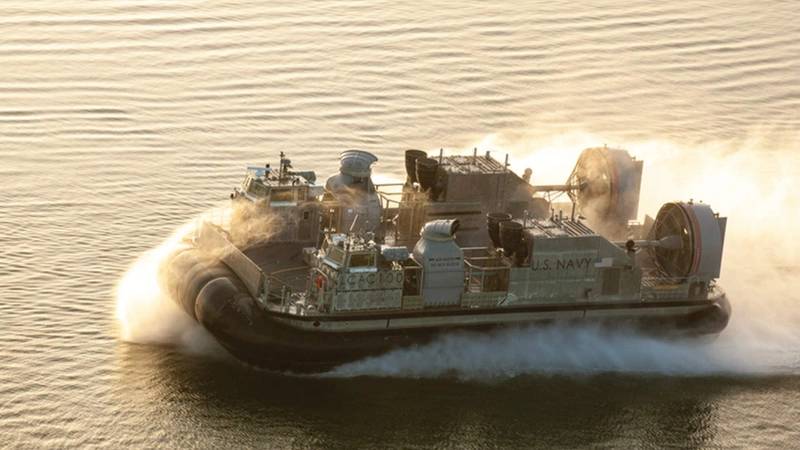 The Ship to Shore Connector (SSC) is the new generation Landing Craft Air Cushion (LCAC).
The Ship to Shore Connector (SSC) is the new generation Landing Craft Air Cushion (LCAC).
Textron photo
